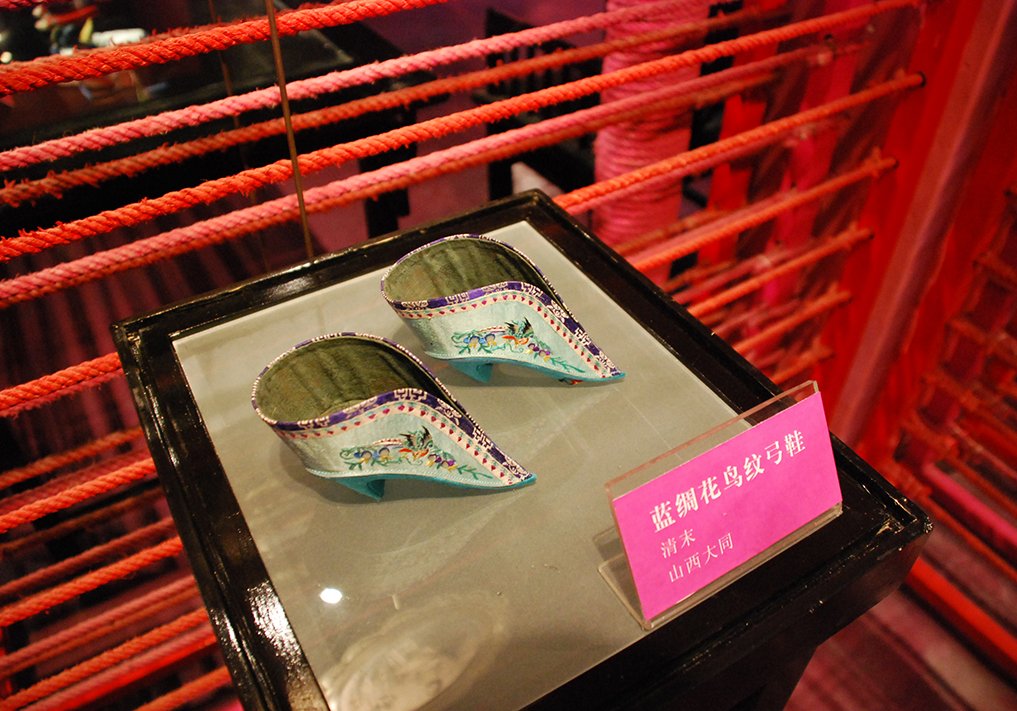The Painful Tradition of Foot-Binding in Ancient China
It was a horrible custom in ancient times, where women’s feet were tightly bound with cloth to deform and reduce their size. Foot-binding was an extremely painful process. It started when girls were four or five years old and continued until their bones set in adulthood. The process involved using long strips of cloth to break and bend the four toes, except the big toe, towards the sole of the foot, forming a “three-inch golden lotus” in the shape of a bamboo shoot.
The Process and Endurance of Foot-Binding
This was usually done under coercion from elders. Mothers or grandmothers would ignore the child’s pain, believing it would secure the child’s future. Yet women with bound feet were forced to endure the extreme pain of broken bones and lifelong ulcers while laboring, many even unable to walk on their own. Why was this allowed to happen and even encouraged by the people at that time?
Societal Expectations and Patriarchy
In ancient China, a patriarchal society, men believed that small-footed women were more desirable. This deliberate act of mutilation became widespread because it artificially created a so-called “feminine beauty.” Before the Five Dynasties, there were already poems and prose praising the beauty of women’s small feet. After the Five Dynasties, bound feet were even more highly regarded, being called “golden lotuses,” “fragrant hooks,” “lotuses blooming with every step,” and so on.
Cultural Significance and The Beauty Standards
Literati even summarized the “four beauties” (shape, quality, posture, spirit) and “three beauties” (fat, soft, graceful) of small feet. Feet larger than four inches were called “iron lotuses,” four inches were called “silver lotuses,” and three inches were called “golden lotuses.” The earliest appearance of “three-inch golden lotuses” was in the Song Dynasty (960–1279). This practice reached its peak during the Ming and Qing dynasties (roughly 1368-1912).
Resistance and Reform Movements Against Foot-Binding
Foot-binding spread to women of all social classes, and women who did not undergo foot-binding faced social discrimination. During the Qing Dynasty, there were strong voices against foot-binding, and although foot-binding was repeatedly banned, it persisted. The anti-foot-binding movement at the end of the Qing Dynasty was initiated by reformists.
The Efforts of Kang Youwei and Anti-Foot-Binding Societies
As early as the ninth year of the Guangxu reign (1883), Kang Youwei, in his hometown of Nanhai, Guangdong, united with some enlightened gentry to establish the Anti-Foot-Binding Society. In the twenty-second year of the Guangxu reign (1896), Kang Youwei and Kang Guangren founded the Central Guangdong Anti-Foot-Binding Society in Guangzhou, advocating for women not to bind their feet. At its inception, the society had over ten thousand members.
The End of an Era and Liberation
Kang Youwei wrote a proclamation for the Anti-Foot-Binding Society and refused to bind his daughter’s feet when she reached the age for foot-binding, despite strong opposition from his fellow villagers. He persisted in not binding his daughter’s feet. Later, his daughter even accompanied him on a tour of the West for investigation and study. After the Qing Dynasty was overthrown, Sun Yat-sen officially ordered the prohibition of foot-binding, which allowed more women to gain liberation and live in their most natural state.
Reflecting on History and Its Lessons
The abolition of foot binding is just one aspect of history. Today’s Chinese women can hardly imagine the lives of their ancestors who broke their bones to conform to societal norms and were bound to marriage for life. It’s also worth mentioning that these themes are often deliberately avoided in many TV dramas, especially time-travel dramas. I believe that when introducing a country’s culture and history, we should not only highlight its beautiful and bright sides but also acknowledge its cruel and ugly aspects. One of the purposes of learning about the past is to avoid repeating the same mistakes and to reduce the suffering of those who are still trapped in similar circumstances today.


